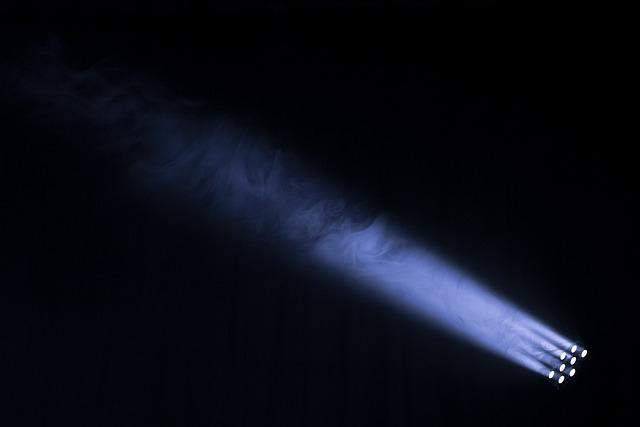In the ever-evolving landscape of cinema, where contemporary blockbusters and streaming giants dominate the conversation, a treasure trove of classic films often remains overshadowed. These cinematic gems, though celebrated in their time, have gradually faded from the spotlight, overshadowed by the relentless march of modern storytelling. Yet, within these celluloid masterpieces lies a wealth of artistry, innovation, and narrative depth that merits renewed attention. This year, as audiences seek fresh perspectives and timeless storytelling, it is imperative to revisit and recognize these underrated classics. By delving into their unique contributions and exploring the cultural and artistic contexts that shaped them, we can unearth the enduring relevance and brilliance that these films offer. Join us as we shine a light on these overlooked treasures, inviting a new generation to appreciate the cinematic legacy they hold.
Rediscovering Hidden Gems: A Deep Dive into Cinematic Masterpieces
In the vast landscape of cinema, some films are overshadowed by their blockbuster counterparts, yet they offer profound narratives and groundbreaking techniques that demand appreciation. This year, it’s time to shine a spotlight on these underrated classics that have been waiting in the wings for far too long.
- “The Night of the Hunter” (1955): A haunting tale woven with visual poetry, this film explores the sinister charm of a preacher with a penchant for manipulation. Its innovative use of light and shadow crafts an atmosphere that lingers long after the credits roll.
- “A Matter of Life and Death” (1946): An ethereal blend of romance and fantasy, this British gem masterfully tackles themes of fate and love against a backdrop of celestial courtrooms. The film’s bold color palette and imaginative storytelling make it a timeless piece.
- “Paper Moon” (1973): With its crisp black-and-white cinematography and pitch-perfect performances, this film captures the heartwarming and often humorous journey of a con artist and his young accomplice. Its sharp dialogue and period detail elevate it to classic status.
These films not only entertain but challenge viewers to see beyond the surface, offering a cinematic experience that resonates on multiple levels. As we celebrate the art of filmmaking, let’s give these treasures the recognition they truly deserve.

Unveiling the Craftsmanship: Analyzing Timeless Directorial Techniques
In the realm of classic cinema, the artistry of direction often plays a pivotal role in elevating a film from mere entertainment to timeless masterpiece. These directors, with their visionary techniques, craft narratives that linger in the audience’s psyche long after the credits roll. Let’s delve into some understated directorial methods that continue to captivate audiences and deserve renewed attention:
- Subtle Symbolism: Masterful directors weave symbolic elements throughout their films, creating layers of meaning that invite multiple interpretations. Consider how In the Mood for Love uses color and composition to explore themes of love and longing.
- Innovative Camera Work: Unconventional camera angles and movements can evoke emotion and tension. The use of long takes in Touch of Evil showcases Orson Welles’ ability to build suspense and maintain audience engagement.
- Sound as a Narrative Tool: Sound design transcends mere background noise in films like Stalker, where ambient soundscapes enhance the film’s haunting atmosphere and thematic depth.
By revisiting these films and their ingenious directorial techniques, we not only honor the legacy of these cinematic pioneers but also enrich our understanding of the art form itself.

Forgotten Narratives: Storylines That Resonate in Todays World
In a world where cinema often mirrors societal shifts, several classic films have narratives that speak powerfully to contemporary issues, yet remain underrated. These films, often overshadowed by mainstream giants, deserve renewed attention for their profound themes and artistic innovation. “The Night of the Hunter” (1955), for example, explores the duality of human nature and the pervasive struggle between good and evil, themes that are strikingly relevant in today’s polarized climate. Its haunting cinematography and bold storytelling continue to influence modern filmmakers, urging viewers to question the moral complexities of human behavior.
Another gem, “A Face in the Crowd” (1957), offers a prescient look at the intersection of media and power. It examines how charisma and manipulation can shape public opinion, a concept that resonates more than ever in our digital age. The film’s sharp critique of celebrity culture and media influence serves as a cautionary tale, encouraging audiences to remain vigilant about the narratives they consume. These films, among others, not only showcase timeless storytelling but also provide critical lenses through which we can examine current societal dynamics.
- The Night of the Hunter (1955)
- A Face in the Crowd (1957)
- Paths of Glory (1957)
- Sweet Smell of Success (1957)

Spotlight on Performances: Celebrating Undervalued Acting Brilliance
In the realm of cinema, certain films remain hidden gems, their brilliance overshadowed by more mainstream counterparts. This year, let’s shine a light on these underrated classics, whose performances have quietly carved a niche in the hearts of discerning viewers. “The Night of the Hunter” offers a haunting portrayal by Robert Mitchum, whose chilling performance as the menacing preacher deserves renewed attention. Similarly, “A Face in the Crowd” showcases Andy Griffith’s transformation from beloved TV personality to a sinister populist, a role that remains eerily relevant today.
- “The Swimmer” – Burt Lancaster’s poignant journey through suburban America, an exploration of existential despair.
- “The King of Comedy” – Robert De Niro’s unsettling take on fame obsession, a masterclass in nuanced acting.
- “After Hours” – Griffin Dunne’s frantic odyssey through nocturnal New York, capturing the absurdity of urban isolation.
These films exemplify performances that defy conventional expectations, inviting viewers to revisit and appreciate the artistry often overshadowed by the commercial success of their contemporaries. As we celebrate these cinematic treasures, we acknowledge the actors whose nuanced portrayals continue to resonate and inspire.

